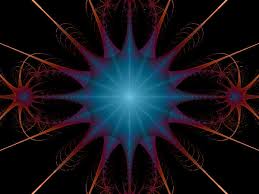Free Background For Computer Biography
Uttar Pradesh is a state located in the north western part of India. With a population of over 200 million people, it is India's most populous state, as well as the world's most populous sub-national entity. Were it a nation in its own right, Uttar Pradesh would be the world's fifth most populous country, ahead of Brazil (a country thirty-five times larger in territorial area than Uttar Pradesh). On 9 November 2000, the Himalayan portion of the state, comprising the Garhwal and Kumaon divisions and Haridwar district, was formed into a new state 'Uttaranchal', now called Uttarakhand, meaning the 'Northern Segment' state.
Uttar Pradesh is the second largest state-economy in India, with a GDP of $103.5 billion in 2009. The annual per capita GDP of the state was $1586 in 2009, on purchasing power parity basis. It contributed 8.34% to India's total GDP in the financial year 2010. Agriculture is a significant part of UP's economy. The state was India's sixth largest producer of fruits, and became the largest producer of vegetables in 2010.[8] With an area of 93,933 sq mi (243,290 km2), Uttar Pradesh covers a large part of the highly fertile and densely populated upper Gangetic plain. It shares an international border with Nepal to the north. Other states along Uttar Pradesh's border include Uttarakhand, Haryana and Delhi to the north and northwest; Rajasthan on the west; Madhya Pradesh on the south; Chhattisgarh and Jharkhand on the south east; and Bihar on the east.
Uttar Pradesh has been one of the cultural hubs of India. The state has several religiously significant sites, both to Hinduism and Buddhism. It has served as a melting pot of Indo-Islamic syncretic culture of the medieval period. The state is home to many historical and culturally important cities. Throughout its history, the region of Uttar Pradesh was sometimes divided between smaller kingdoms and at other times formed an important part of larger empires that arose on its east or west, including the Magadha, Nanda, Mauryan, Sunga, Kushan, Gupta, Gurjara, Rashtrakuta, Pala and Mughal empires. In modern times, the state has shown a strong tradition for a secular democracy, electing people from different religions, minorities and castes to its highest offices. Since 1950, the state has elected, on four occasions, a chief minister from the minority Dalit community.
The state has undergone several name changes and territorial demarcations since the early 19th century, when the British East India Company had established it's supremacy in the Gangetic plains. In 1833 the then Bengal Presidency of the Company was divided into two parts, one of which became Presidency of Agra; in 1836 the Agra area was named North-Western Provinces and placed under a Lieutenant Governor by the Company. In 1877, the two provinces of Agra and Oudh (Oudh was occupied by the Company in 1858), were placed under one Colonial administrator of the British Crown; he was called Lieutenant Governor of the North-Western Provinces and Chief Commissioner of Oudh. Later in 1902 the name was changed to United Provinces of Agra and Oudh with Lieutenant Governor of the United Provinces of Agra and Oudh as administrator; in 1921 Lieutenant Governorship was elevated to Governorship and the name of the province was changed to United Provinces of British India. On 1 April 1937, the name was shortened to United Provinces. On independence from the British colonial rule in 1947, the princely states of Rampur, Benares and Tehri-Garwal were merged into the United Provinces. In 1950, the name of United Provinces was changed to Uttar Pradesh.








Uttar Pradesh is a state located in the north western part of India. With a population of over 200 million people, it is India's most populous state, as well as the world's most populous sub-national entity. Were it a nation in its own right, Uttar Pradesh would be the world's fifth most populous country, ahead of Brazil (a country thirty-five times larger in territorial area than Uttar Pradesh). On 9 November 2000, the Himalayan portion of the state, comprising the Garhwal and Kumaon divisions and Haridwar district, was formed into a new state 'Uttaranchal', now called Uttarakhand, meaning the 'Northern Segment' state.
Uttar Pradesh is the second largest state-economy in India, with a GDP of $103.5 billion in 2009. The annual per capita GDP of the state was $1586 in 2009, on purchasing power parity basis. It contributed 8.34% to India's total GDP in the financial year 2010. Agriculture is a significant part of UP's economy. The state was India's sixth largest producer of fruits, and became the largest producer of vegetables in 2010.[8] With an area of 93,933 sq mi (243,290 km2), Uttar Pradesh covers a large part of the highly fertile and densely populated upper Gangetic plain. It shares an international border with Nepal to the north. Other states along Uttar Pradesh's border include Uttarakhand, Haryana and Delhi to the north and northwest; Rajasthan on the west; Madhya Pradesh on the south; Chhattisgarh and Jharkhand on the south east; and Bihar on the east.
Uttar Pradesh has been one of the cultural hubs of India. The state has several religiously significant sites, both to Hinduism and Buddhism. It has served as a melting pot of Indo-Islamic syncretic culture of the medieval period. The state is home to many historical and culturally important cities. Throughout its history, the region of Uttar Pradesh was sometimes divided between smaller kingdoms and at other times formed an important part of larger empires that arose on its east or west, including the Magadha, Nanda, Mauryan, Sunga, Kushan, Gupta, Gurjara, Rashtrakuta, Pala and Mughal empires. In modern times, the state has shown a strong tradition for a secular democracy, electing people from different religions, minorities and castes to its highest offices. Since 1950, the state has elected, on four occasions, a chief minister from the minority Dalit community.
The state has undergone several name changes and territorial demarcations since the early 19th century, when the British East India Company had established it's supremacy in the Gangetic plains. In 1833 the then Bengal Presidency of the Company was divided into two parts, one of which became Presidency of Agra; in 1836 the Agra area was named North-Western Provinces and placed under a Lieutenant Governor by the Company. In 1877, the two provinces of Agra and Oudh (Oudh was occupied by the Company in 1858), were placed under one Colonial administrator of the British Crown; he was called Lieutenant Governor of the North-Western Provinces and Chief Commissioner of Oudh. Later in 1902 the name was changed to United Provinces of Agra and Oudh with Lieutenant Governor of the United Provinces of Agra and Oudh as administrator; in 1921 Lieutenant Governorship was elevated to Governorship and the name of the province was changed to United Provinces of British India. On 1 April 1937, the name was shortened to United Provinces. On independence from the British colonial rule in 1947, the princely states of Rampur, Benares and Tehri-Garwal were merged into the United Provinces. In 1950, the name of United Provinces was changed to Uttar Pradesh.
Free Background For Computer
Free Background For Computer
Free Background For Computer
Free Background For Computer
Free Background For Computer
Free Background For Computer
Free Background For Computer
Free Background For Computer
Free Background For Computer
How To Change Theme / Wallpaper On Windows 7 Starter
How To: Get A Moving Desktop Background For Windows Xp
No comments:
Post a Comment